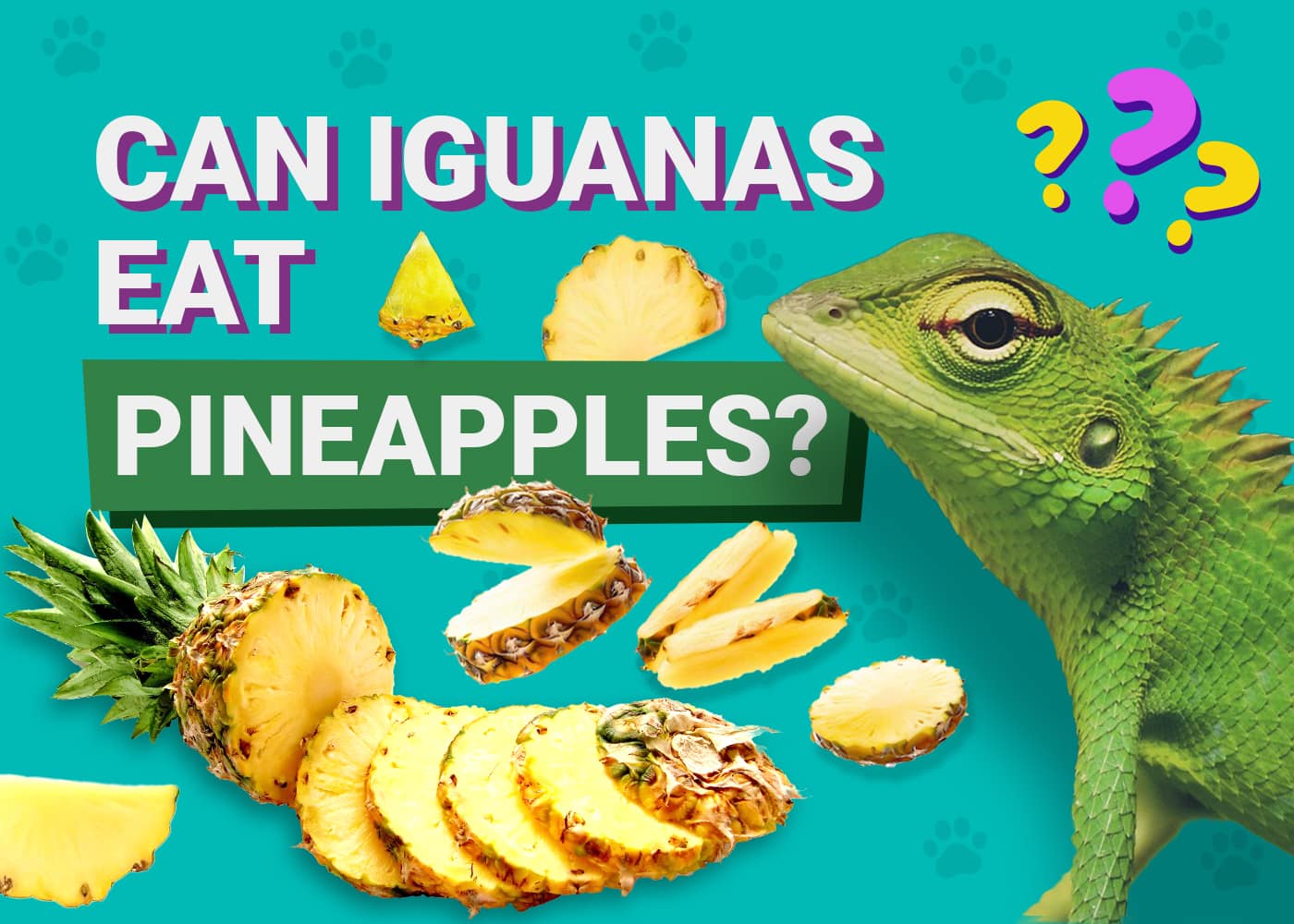VET APPROVED

The information is current and up-to-date in accordance with the latest veterinarian research.
Learn more »Click to Skip Ahead
Iguanas are herbivores, and their diet consists of leafy salads and vegetables, along with the occasional fruit treat. Pineapples in particular can be nutritious additions to their diet, but they’re also highly acidic and shouldn’t be fed to your iguana too often.
Iguanas require vegetables containing high levels of calcium. Since they have only 13mg of calcium per 100g, pineapples are not recommended for iguanas. They’re also a fruit that contains oxalic acid, which binds to calcium and stops iguanas from being able to absorb it properly. If fed to your iguana too often, it can lead to calcium deficiency and kidney stones.

How to Prepare Pineapple for Iguanas
Iguanas may not be able to eat pineapple often, but knowing how to properly prepare this fruit will enable you to monitor your iguana’s consumption of it. Fruit, in general, should only make up about 5% of your iguana’s diet, and pineapple should be even less.
Here are a few things to keep in mind when you treat your iguana to a bit of pineapple.
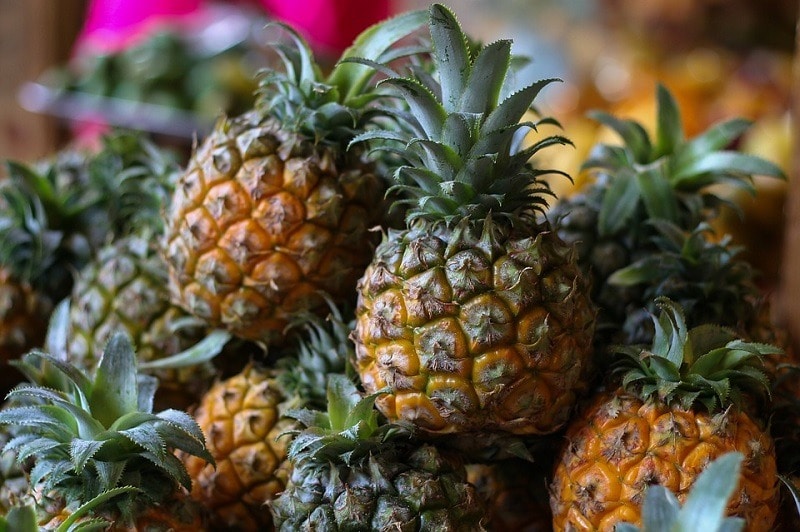
Organic and fresh
Free from standard pesticides, organic fruit — not just pineapple — can be the best choice. By purchasing organic produce, you reduce the risk of poisoning your iguana, though you should still take care to wash the fruit before chopping it up.
The fresher the pineapple, the better it is. Don’t feed dried or canned pineapple to your iguana, as these contain too much sugar.
Remove the skin, top, and core
Both the skin and core of the pineapple are too tough for iguanas to digest. While the leaves seem to match the rest of your iguana’s diet and are edible to some animals, keep them away from your iguana. For your pet lizard, they’re tough to digest — if they don’t get lodged in their throat.
Small pieces
Whenever you feed your iguana anything, you should always make sure to cut it into manageable pieces. This goes for pineapple too. With the skin and core removed, chop the flesh of the pineapple into chunks small enough for your iguana to handle.
Remember not to give them too much. A few small pieces will be more than enough.
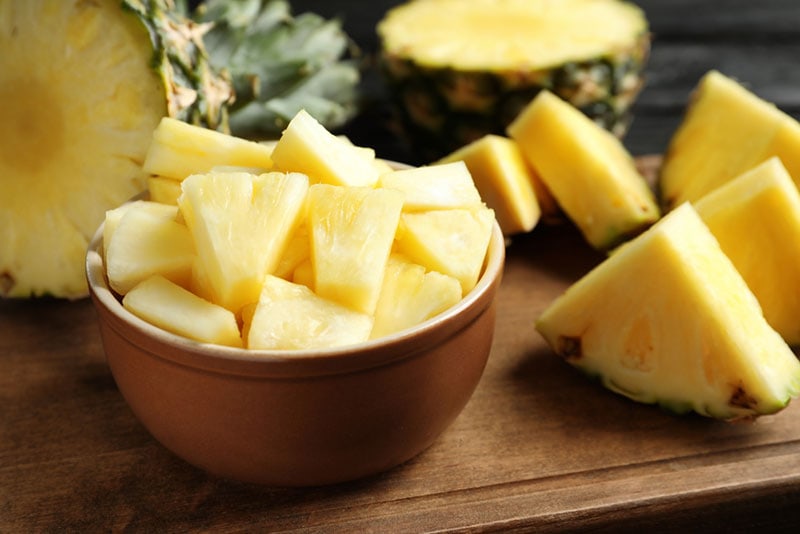

What Can Iguanas Eat?
For a balanced, healthy diet, you should feed your iguana a range of produce.
- Calcium-rich, leafy vegetables: Dandelion, collards, green beans, turnips
- Fresh vegetables: Chopped carrots, sweet potato, zucchini, bell peppers
- Fruit: Fresh figs, papaya, melon, and rarely plums and bananas
- Iguana food: Pellets brought from a pet store
Always remember to wash fruit and vegetables thoroughly before feeding them to your iguana. This will remove any pesticides remaining on the produce. Vegetables can be served cooked but are more nutritional raw.
Unlike other reptiles, iguanas are primarily herbivores and can’t digest much protein. While juvenile iguanas can eat some insects, animal protein in particular shouldn’t be fed to adult iguanas. Too much protein from insects or other protein-rich foods can cause health issues.
Keep clean water available for your iguana too. They’ll get moisture from their food, but it’s always a good idea to have fresh water close by.
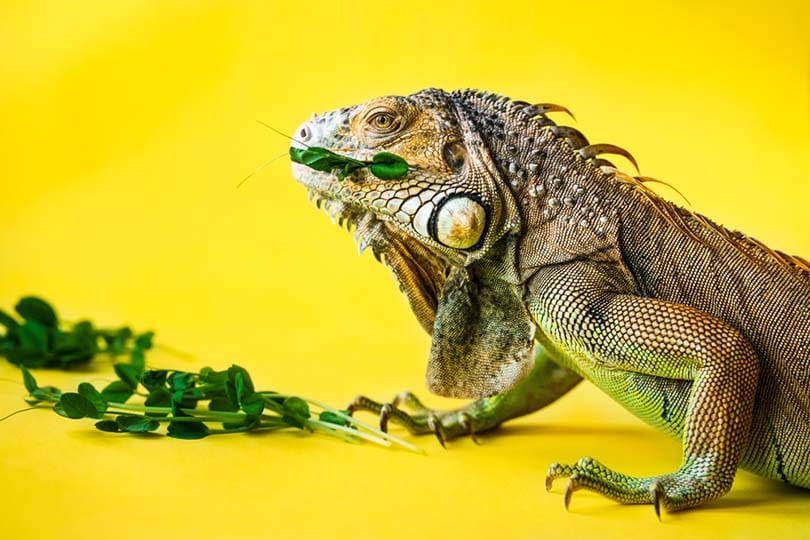
What Food Is Toxic to Iguanas?
Like all creatures, there are foods that you shouldn’t give to your iguana, regardless of how imploring their stare is. If you’re not sure if a food is suitable, check with your vet, but here are a few foods that are no-goes:
- High-fat foods: Potato chips
- Sugary foods: Dessert, chocolate, candy
- Alcohol
- Caffeine
Can Iguanas Eat Bread?
No, it is not recommended to feed bread to an iguana. Bread does not contain the vitamins, minerals, or fiber that they need. It can also contain preservatives, salt, and other ingredients that are not safe for reptiles. Besides disrupting their gut flora, it is low in calcium and high in phosphorus, putting your iguana’s health at risk.
Can Iguanas Eat Fruit?
As herbivores, fruit is one of the foods that iguanas can eat, with a few limitations. Fruit makes for a pleasant change from an iguana’s usual diet of dark, leafy vegetables, but they should never make up more than 10–15% of their food intake.
Not only do fruits lack the minerals that iguanas need, but they are also acidic, sugary, and high in oxalic acid. Oxalic acid binds with calcium — a required nutrient for iguanas — and can lead to calcium deficiency. In particular, the acidity of pineapple can also cause your iguana’s digestive tract to become irritated, sometimes leading to diarrhea.
Can Iguanas Eat Herbs?
Herbs, like cilantro and parsley, add an extra flair to your iguana’s salad. They can be grown at home and given to your iguana freshly washed.
Like pineapple, they’re high in oxalates, particularly the parsley, and shouldn’t be the main part of your iguana’s meals. They can, however, make for a healthy treat once in a while.
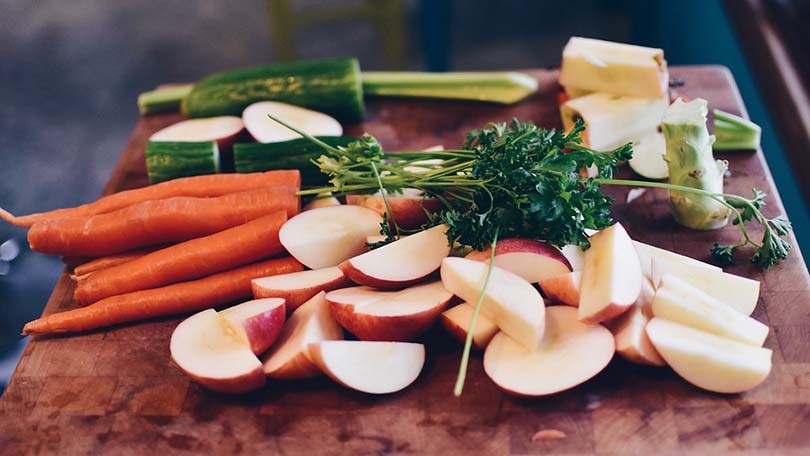

Conclusion
Pineapples are good additions to your iguana’s diet because they’re tasty, nutritious, and filled with moisture, but they should never be more than occasional treats. They don’t have enough calcium to be the main part of an iguana’s diet, and the high acidity, which would irritate their digestive tract and high oxalic acid content can lead to calcium deficiency and kidney stones if fed too frequently.
Never feed your iguana the skin (rind), core, or the leaves of a pineapple. All three are too tough for your pet to digest properly and may get lodged in your iguana’s throat. The majority of an iguana’s diet should consist of dark, leafy vegetables, but a small piece of fruit is a nice treat.
See Also:
